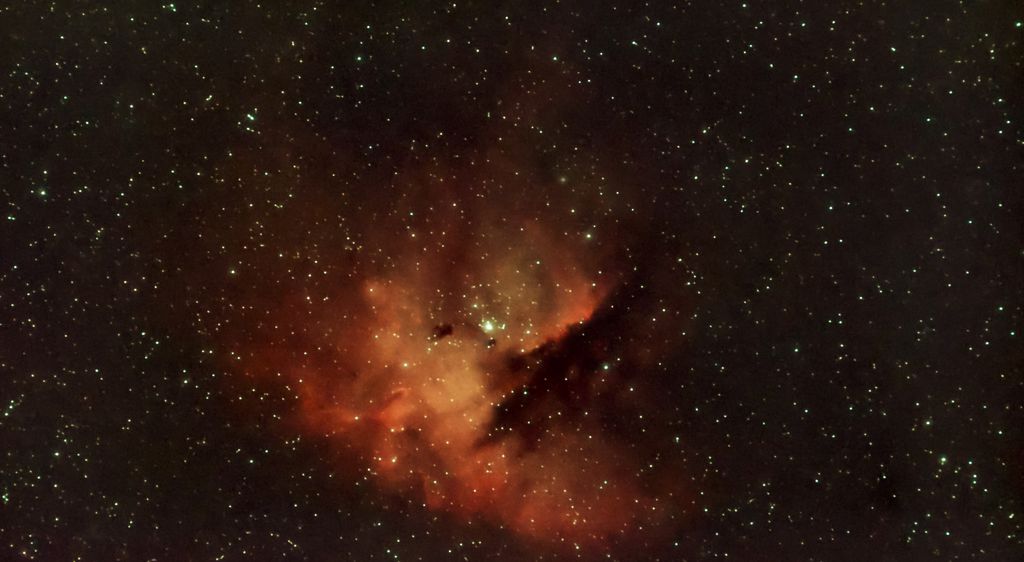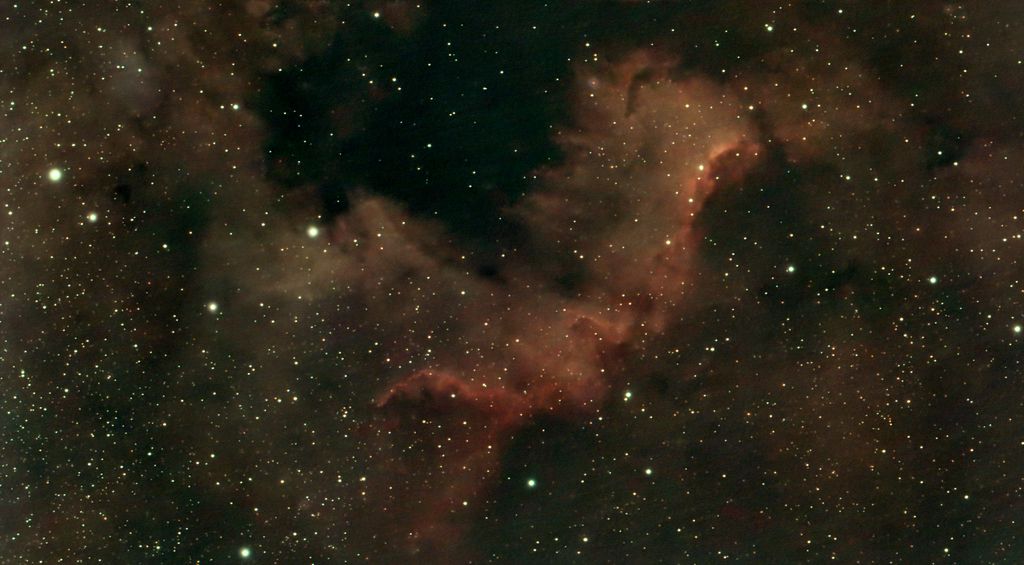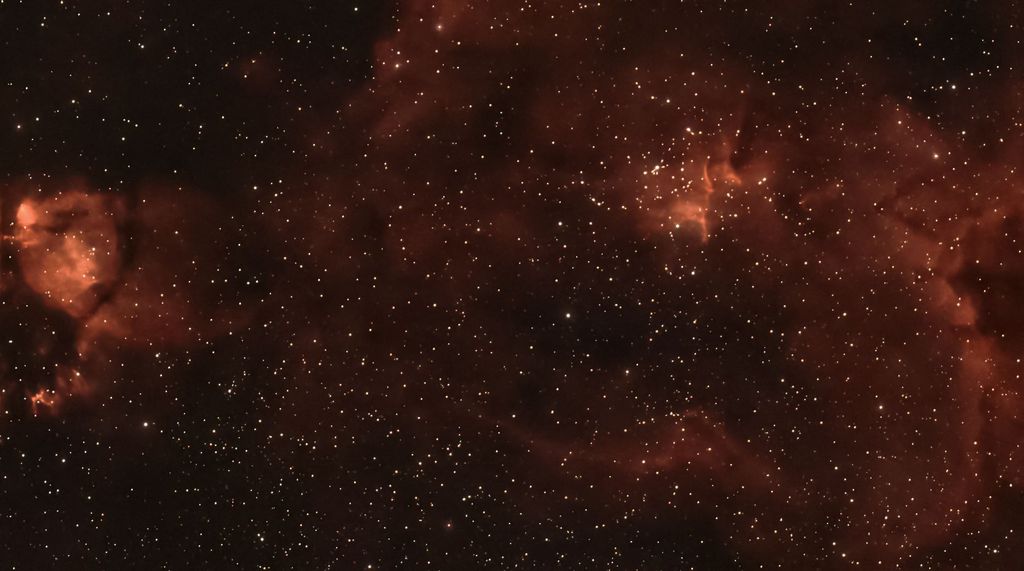Hello,
What gain / offset settings does everyone use for the asi585MC on deep sky objects?
I have read that unity gain is 252 with an offset of 8 but I seem to be getting very bloated stars on this.
Any help would be greatly appreciated.
Thanks,
Joe
|
You cannot like this item. Reason: "ANONYMOUS".
You cannot remove your like from this item.
Editing a post is only allowed within 24 hours after creating it.
You cannot Like this post because the topic is closed.
Copy the URL below to share a direct link to this post.
This post cannot be edited using the classic forums editor.
To edit this post, please enable the "New forums experience" in your settings.
Hello, do you use an IR/UV or narrowband filter? The star size should not depend on the gain if the exposure is correct. I use 260-300 with narrowband filter or lower with UV filter alone…
|
You cannot like this item. Reason: "ANONYMOUS".
You cannot remove your like from this item.
Editing a post is only allowed within 24 hours after creating it.
You cannot Like this post because the topic is closed.
Copy the URL below to share a direct link to this post.
This post cannot be edited using the classic forums editor.
To edit this post, please enable the "New forums experience" in your settings.
I generally don't exceed 180 seconds for a single exposure; otherwise, the stars are easily overexposed.
|
You cannot like this item. Reason: "ANONYMOUS".
You cannot remove your like from this item.
Editing a post is only allowed within 24 hours after creating it.
You cannot Like this post because the topic is closed.
Copy the URL below to share a direct link to this post.
This post cannot be edited using the classic forums editor.
To edit this post, please enable the "New forums experience" in your settings.
Hey Joe, I have not noticed "bloated stars" (I was using 252 with no offset), but I have been using a field flatter too. I just connected the camera to a Samyang 135mm F2 and I'll let you know if I see anything different, if the skies will ever corporate.
|
You cannot like this item. Reason: "ANONYMOUS".
You cannot remove your like from this item.
Editing a post is only allowed within 24 hours after creating it.
You cannot Like this post because the topic is closed.
Copy the URL below to share a direct link to this post.
This post cannot be edited using the classic forums editor.
To edit this post, please enable the "New forums experience" in your settings.
I really don't think your issue is camera related. I use a 585 as my main imaging camera for solar, lunar/planetary and deep sky and it's been working great. My standard settings for deep sky are a gain of 275 and offset of 1. An offset of 8 seems really excessive to me. All you're trying to do with offset is to make sure your histograms are not clipped on the left edge, that's all. Of course there can be many optical reasons for bloated stars such as imaging with an achromatic refractor or not using a UV/IR cut filter, even with an ED or APO refractor. Over exposure can be a cause as well, my subs rarely exceed 30 sec. The longer you go on each sub the more bloated your stars will be.
|
You cannot like this item. Reason: "ANONYMOUS".
You cannot remove your like from this item.
Editing a post is only allowed within 24 hours after creating it.
You cannot Like this post because the topic is closed.
Copy the URL below to share a direct link to this post.
This post cannot be edited using the classic forums editor.
To edit this post, please enable the "New forums experience" in your settings.
I really don't think your issue is camera related. I use a 585 as my main imaging camera for solar, lunar/planetary and deep sky and it's been working great. My standard settings for deep sky are a gain of 275 and offset of 1. An offset of 8 seems really excessive to me. All you're trying to do with offset is to make sure your histograms are not clipped on the left edge, that's all. Of course there can be many optical reasons for bloated stars such as imaging with an achromatic refractor or not using a UV/IR cut filter, even with an ED or APO refractor. Over exposure can be a cause as well, my subs rarely exceed 30 sec. The longer you go on each sub the more bloated your stars will be. Offset should not be determined by looking at the histogram solely. Offset needs to be determined by looking at the bias frames. In pixinsight, under processes, you can use the statistics function. If any pixel is a zero value, then your offset is too low. I went through the process with the 585MC and actually ended up with an offset of 8 as well. My guess is you're not very well calibrated, and probably clipping some data, and maybe you're making up for some of it with a higher gain. On the original topic, I'm currently playing with an uncooled 585MC and Roki 135. At gain 100 I was managing 2 minute exposures, but 3 min were just a bit too blown. My SQM's are just under 21 here so plenty dark. Since I'm running an uncooled sensor, my biggest factor is overcoming dark current. Again, alot of testing and toying around, but I've found above 100 the gain is just wayyyy too high and blows out the entire image wayy too easily. I went to gain zero and I'm able to run 10 minute exposures right now. I seem to be overcoming the dark current much better, but I haven't ran the numbers yet. Can report back later.
|
You cannot like this item. Reason: "ANONYMOUS".
You cannot remove your like from this item.
Editing a post is only allowed within 24 hours after creating it.
You cannot Like this post because the topic is closed.
Copy the URL below to share a direct link to this post.
This post cannot be edited using the classic forums editor.
To edit this post, please enable the "New forums experience" in your settings.
Brian Puhl:
I really don't think your issue is camera related. I use a 585 as my main imaging camera for solar, lunar/planetary and deep sky and it's been working great. My standard settings for deep sky are a gain of 275 and offset of 1. An offset of 8 seems really excessive to me. All you're trying to do with offset is to make sure your histograms are not clipped on the left edge, that's all. Of course there can be many optical reasons for bloated stars such as imaging with an achromatic refractor or not using a UV/IR cut filter, even with an ED or APO refractor. Over exposure can be a cause as well, my subs rarely exceed 30 sec. The longer you go on each sub the more bloated your stars will be.
Offset should not be determined by looking at the histogram solely.
Offset needs to be determined by looking at the bias frames. In pixinsight, under processes, you can use the statistics function. If any pixel is a zero value, then your offset is too low. I went through the process with the 585MC and actually ended up with an offset of 8 as well. My guess is you're not very well calibrated, and probably clipping some data, and maybe you're making up for some of it with a higher gain.
On the original topic, I'm currently playing with an uncooled 585MC and Roki 135. At gain 100 I was managing 2 minute exposures, but 3 min were just a bit too blown. My SQM's are just under 21 here so plenty dark. Since I'm running an uncooled sensor, my biggest factor is overcoming dark current. Again, alot of testing and toying around, but I've found above 100 the gain is just wayyyy too high and blows out the entire image wayy too easily. I went to gain zero and I'm able to run 10 minute exposures right now. I seem to be overcoming the dark current much better, but I haven't ran the numbers yet. Can report back later. @ I don't find that to be the case but then again my subs are short. it is important to mention that you need to be at a gain of 252 to benefit from HCG mode where the read noise drops from a bit over 4 e-RMS to about 1.6 e-RMS. At the same time dynamic range pops back up to 11. Anyway, glad you're diving deep into this camera. I think it's a great option for those who really can't afford some of the expensive options or who need versatility in just one camera. I look forward to the results of your study.
|
You cannot like this item. Reason: "ANONYMOUS".
You cannot remove your like from this item.
Editing a post is only allowed within 24 hours after creating it.
You cannot Like this post because the topic is closed.
Copy the URL below to share a direct link to this post.
This post cannot be edited using the classic forums editor.
To edit this post, please enable the "New forums experience" in your settings.
Thanks all,
I'm imaging with a Samyang 135 @ F2.8 and 120sec exposures. I will try with a lower gain to see what difference that makes…
Joe
|
You cannot like this item. Reason: "ANONYMOUS".
You cannot remove your like from this item.
Editing a post is only allowed within 24 hours after creating it.
You cannot Like this post because the topic is closed.
Copy the URL below to share a direct link to this post.
This post cannot be edited using the classic forums editor.
To edit this post, please enable the "New forums experience" in your settings.
The recommendations are a little puzzling: first I used a gain of 252, but the pictures were over exposed and the stars bloated, despite short exposures. Finally, I got good images with gain at… zero !
Philippe
|
You cannot like this item. Reason: "ANONYMOUS".
You cannot remove your like from this item.
Editing a post is only allowed within 24 hours after creating it.
You cannot Like this post because the topic is closed.
Copy the URL below to share a direct link to this post.
This post cannot be edited using the classic forums editor.
To edit this post, please enable the "New forums experience" in your settings.
Sorry to be ignorant, but what does "offset" mean in this connection?
Niels
|
You cannot like this item. Reason: "ANONYMOUS".
You cannot remove your like from this item.
Editing a post is only allowed within 24 hours after creating it.
You cannot Like this post because the topic is closed.
Copy the URL below to share a direct link to this post.
This post cannot be edited using the classic forums editor.
To edit this post, please enable the "New forums experience" in your settings.
Philippe Barraud:
The recommendations are a little puzzling: first I used a gain of 252, but the pictures were over exposed and the stars bloated, despite short exposures. Finally, I got good images with gain at... zero !
Philipp, how are you looking at your images and what is the format? A .fit format image that's not stretched will never look over exposed under normal circumstances. |
You cannot like this item. Reason: "ANONYMOUS".
You cannot remove your like from this item.
Editing a post is only allowed within 24 hours after creating it.
You cannot Like this post because the topic is closed.
Copy the URL below to share a direct link to this post.
This post cannot be edited using the classic forums editor.
To edit this post, please enable the "New forums experience" in your settings.
N Foldager:
Sorry to be ignorant, but what does "offset" mean in this connection?
Offset is a setting that all astronomy cameras have. In simple terms, adding offset prevents clipping in the low end, think of it as shifting the histogram to the right. |
You cannot like this item. Reason: "ANONYMOUS".
You cannot remove your like from this item.
Editing a post is only allowed within 24 hours after creating it.
You cannot Like this post because the topic is closed.
Copy the URL below to share a direct link to this post.
This post cannot be edited using the classic forums editor.
To edit this post, please enable the "New forums experience" in your settings.
Un saludo a todos llevo gastando bastante tiempo la así 585 mc yo no supero estos parámetros la ganancia 100 exposiciones 210 s tomas suelo hacer entre 20/40 y también realizo 30 Dark filtro optolong L-eNhance los resultados son también decentes bajo un cielo Bortle 9 La cámara no es refrigerada en un principio sabemos que no es para hacer este tipo de fotografía pero se defiende muy bien Otra cosa es el procesado que hay que dedicarle tiempo Hay tenéis algunos resultados    |
You cannot like this item. Reason: "ANONYMOUS".
You cannot remove your like from this item.
Editing a post is only allowed within 24 hours after creating it.
You cannot Like this post because the topic is closed.
Copy the URL below to share a direct link to this post.
This post cannot be edited using the classic forums editor.
To edit this post, please enable the "New forums experience" in your settings.





